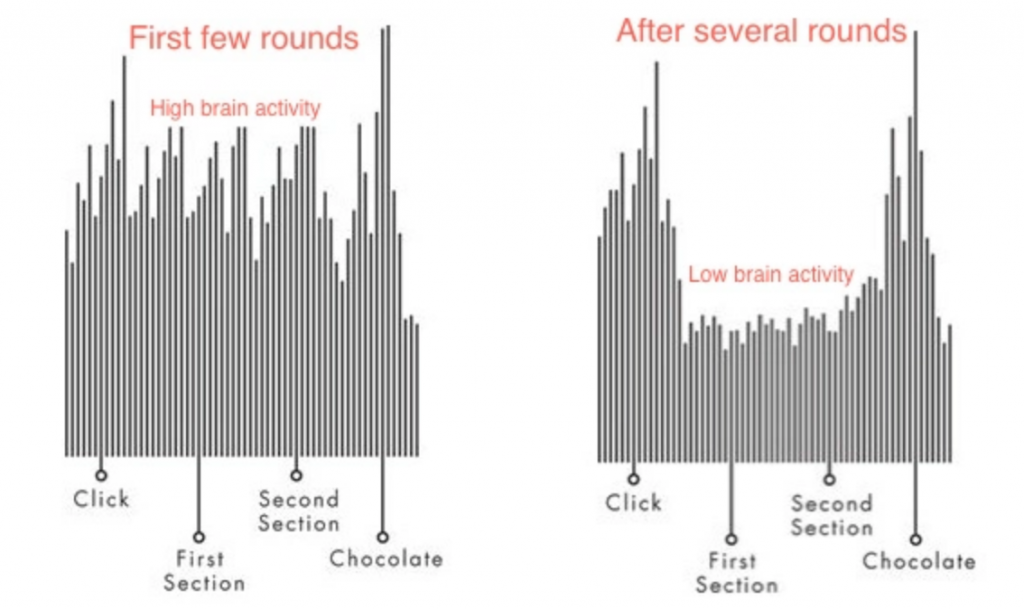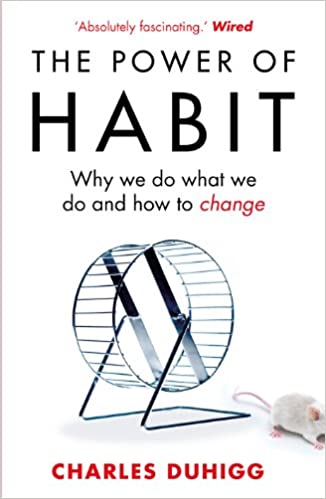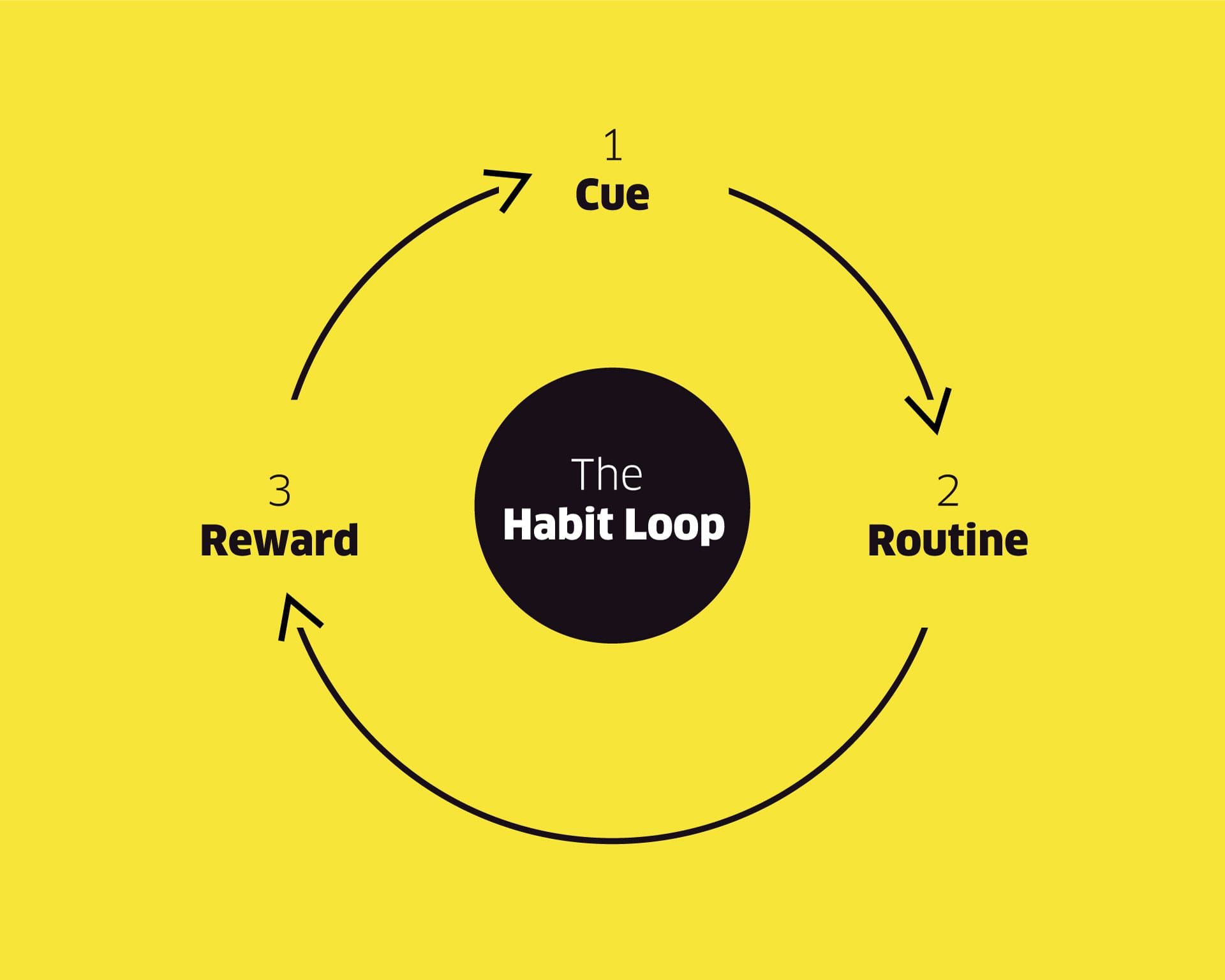Why we do what we do and how to change.
Original Author – Charles Duhigg
Let’s have a bet.
I bet you have encountered the following scenarios below. 100% certainty, period.
There’s a point of time in life, where you just feel like you need to get rid of your status quo.
You feel that you are not living up to your own standard.
You know you need to get rid of something in your life and move on.
You look into the mirror, you don’t recognise yourself any longer.
You are disgusted by your own sloppy self.
No way. Enough is enough. I can’t keep on going on like this anymore.
“I want to be better. I need a change.”
You started to buck yourself up, declutter yourself.
You signed up for gym memberships. You exercised an hour everyday and ate only salad for lunch and dinner.
You said no to alcohol and ordered plain water during gathering.
You stopped dropping by the casino during the weekends.
You went to bed at 10 PM, and woke up at 6 AM to read self-motivation books.
You feel that you are now thinking straight. Super motivated.
This time will be different. You are not going back to the old self.
Not today.
However, when tough times hit you, when the temptation is strong, POOF. You fall back to your old self again.
Poof.
All your filthy old habits take over you, again.
You started munching on all the junk food, again.
You finished a few towers of beer with friends last night.
You have no idea why, but you started gambling, and lost.
You stayed up late at night watching Netflix, and did not finish the book.
You screwed up again. Back to ground zero.
Next time, I will try again. It has been rough recently.
Let me indulge myself first. Just today.
Sounds familiar to you?
The problem is, bad habits, once established in our human mind, cannot easily be erased.
When something is so deeply engraved onto your brain, it becomes part of you. It is like breathing, but more subtle.
They live within your subconscious mind. You tend to perform them more often than you thought you would.
Is like your brain automatically did the decision making process for you.
You can try to battle them over willpower and motivation. For some time.
When your willpower muscles get sore, temptations get strong.
Our life with a definite form, is but a mass of habits.
And if you do not yet understand the underlying structure of habits, you are more than likely prone to give in, and travel back to the old days.
This is why it is so important to grasp the idea of how habits are formed.
Sometimes, it is not about getting rid of the old habits. It is about changing what you do, to achieve the same reward you were craving for.
You cannot extinguish a bad habit, you can only change it.
Only when you understand the foundations, the fundamentals, you shall be enlightened with the ability to hack through habits, and make new behaviours last for good.
In order to take back control of our life, we all need to know what is called “The Habit Loop”.
I see. Now you get the idea I’m trying to pitch here.
The Power of Habits gives you a window to look at this world, from a whole new angle, different perspective.
Once you know the structure, you can replace old habits with new ones.
Ready to learn? Let’s dive deep below.
Habits, as memory and as reason, are the roots of how we behave.
We might not remember the experiences that create our habits, but they have well lodged within our brains. Influencing how we act.
It is powerful but delicate. It emerges outside of our consciousnesss.
But to build a habit, we need to deliberately design it.
And here’s the simple framework on how habit works – The Habit Loop.

The Habit Loop is completed by three entities: Cue, Routine, Reward. Therefore often referred to as the Cue-Routine-Reward Loop.
Simply put, there’s always a CUE to trigger your brain activity.
Cue can be anything. All the way from visual trigger, location, time , emotions, thoughts or even particular people.
It signals your brain to start doing certain actions or behaviours.
The actions of behaviours that follow straight after the cue, is ROUTINE.
Routine is performed in order to achieve a certain REWARD.
A positive feedback to your brain that you actually CRAVE for.
Yes, it is that simple. The core message of habits, is to identify the cue and reward that is driving you to perform your routine. Once you know the framework, you can potentially change any ill-habits of yours.
Habits never really disappear, but encoded into the structures of our brains.
Researches from MIT (Brain & Cognitive Sciences) have discovered that at the centre of our skull is a golf ball sized lump of tissue, called ‘basal ganglia’. This part of the brain, is linked with how our habits operate.
Imagine our brain as an onion. The outer layers are the most recent additions from an evolutionary perspective, while the inside the brain are more primitive structures – controlling our automatic behaviours.
This is why someone with a severe brain damage, who cannot retain memory for more than 20 minutes, may still be capable of performing certain habitual activities that were formed earlier on in their life.
“Decisions are habitual and effortless as long as basal ganglia stays intact, and cues remain constant.”
In a specially designed rat-maze experiment, brain activities were being tracked to understand the relationship between habits. A significant change in the brain activity was discovered when the process has been internalised by the rats.
In the first few experiments, the brain activity is high throughout the CUE, certain points of time during the ROUTINE, and when the rats found their REWARD.
After several trials, the brain activity spikes up ONLY when the CUE and REWARD are presented. This is a very striking information. It successfully proved to the world that habits, once formed, allowed our minds to ramp down and go through an “energy-saving” mode. Our brain stops participating in decision making and divert focus to other tasks.

This explains why when you perform some repetitive tasks very regularly, you tends to not think about what you are doing when you are actually doing it. Habits save up the ‘main’ brain energy, so that more high-level tasks can be performed.
This is also why you find that time flies faster as you grow up, because many task are executed in an automatic mode, which does not require you to use your brain power and think before acting.
However, the three entities in the Habit Loop may close the cycle, but there’s one factor behind driving the entire loop, making the routine happen. If you are trying to create new habits, you need something called CRAVING.
Craving powers the habit loop.
Without craving for the designed reward, even with the perfect habit loop structure, it just won’t work out well.
It is the urge that makes cues and rewards so powerful.
Imagine every morning, why do you brush your teeth?
Is it really because you want to have a good oral health? Or it is more about having an enticing beautiful smile? The reward is tempting, but there is in fact another tiny driver that is hidden in the system: the cool, tingling sensation on the tongue and gums that promote usage.
This is how advertising works – Find a simple trigger to convince customer to use the products every day.
Consumers need some kind of signal to show that a product is working.
Therefore, toothpaste companies add minty flavour to create a fresh sensation straight after you brush you teeth. Cleaning agents foam readily once you use them for washing. To make users ‘see’ that things are working.
These instant gratification satisfy our brains desire for positive feedback.
Craving drives habits.
Habits are so powerful that they create neurological cravings. It emerges so gradually or subtle that we are not always aware of their existence.
Figuring out how to spark a craving makes creating a new habit easier.
When you see the cue, you crave already for the reward, that’s why you perform the routine.
Take for example, P&G marketed Febreeze to remove any kind of odour. The problem is, people that are living in the problem often don’t realise they have a problem. There is literally no drive, no craving that is powering the habit loop.
By adding nice scent to market Febreeze, P&G successfully captured a large market cap and instilled a new habits to many households – the crave for a nice smell after hard work.
After all, who does not like smelling something nice as a reward?
Anticipation of the rewards immediately when cue is prompted.
Take for example, when you see the chocolate brownie right in front of your eyes (CUE), your brain already starts to release the ‘good-feeling’ chemicals that you will secrete out after the taste pleasure (REWARD).
It is just one line separating daily habits from an addiction-like reactions: wanting evolves into obsessive cravings – brain go autopilot.
To overpower the habit, we must then recognise which craving is driving the behaviour.
Keep the old cue, deliver the old reward, but insert a new routine.
Let’s be frank. Most of us have spent our lives building on the habits.
And we have already learned that we cannot extinguish a bad habit.
But we can change it. The question is, how?
People do not feel comfortable with unfamiliar stuffs.
It is often easier to convince someone to adopt a new behaviour if there was something familiar at the beginning and the end. Thus, the Golden Rule to cultivate habit change is to keep the old cue, deliver the old reward, but insert a new routine.
Your daily attempts to give up snacking often fails unless new routine emerges to satisfy old cues and reward urges. What exactly are you craving for when you want that piece of chocolate cookie?
Is it the taste, sugar rush, or a distraction from work?
Often, we don’t understand the cravings driving our behaviours until we look for them. Once you recognised the cues and the rewards, you are halfway to changing it. Your brain can be reprogrammed, habits are delicate, all you need is to plan and perform it deliberately.
Once identified, keep the same cue and reward, insert a new routine.
Some habits, however, require one more ingredient to perfect the soup – BELIEF.
For habits to permanently change, people must believe that change is feasible. It is also easier if you commit into something together in a group.
This can explain why a community is powerful as it grows out a communal experience. People learned how to believe in something, that skill started spilling over.
Studies have shown that people with spiritual belief or faith in the higher power, have been tied to better adjustment in times of crisis.
You have to believe that things will get better.
Good organisational habits bring success to an organisation.
Habits happen on an individual, routines happen in a group.
When you build good routine, you get good outcome from the team.
During his time as a CEO, Paul O’Neil targeted the safety issue of Alcoa.
“If we bring injury rates down, it will be because of individuals at this company has agreed to become part of something important.”
Eventually, this wise decision of his, helped to reshape the company: improvement in worker’s education on quality control, efficient work processes, safe working practices, constant communications, new ideas emerging. The corporate culture grow out of the keystone habits so strongly and becomes a part of the corporate identity.
This is an example on how a keystone habit, overspills and help to build new organisational habits. Keystone habits are habits that have “small wins” to help other habits flourish by creating new structures.
Michael Phelps was trained by his coach, Bob Bowman, to perform mental visualisation on how he swims in the pool every night before sleep, and focused on building the right mindset. In the end, all other routines fall perfectly once the core habits were well-positioned.
Once your brain has been conditioned to collect all the small winning trophies, forces are set in motion that favour another small win.
Attack one habit, watch the changes ripple through the organisation.
Have you wondered why sometimes you feel tired of working?
Howard Schultz, the man who made Starbucks big, has noticed an interesting trend on why this might happen.
Starbucks training programme for dozens of routines established to allow their partners to follow certain routine at rough times. The partners now have a way to deal with inflection points, a sense of agency, and learn to build up willpower as their habit.
“If you tell people that they have what it takes to succeed, they’ll prove you right.”
People want to be in control of their lives, a genuine decision-making priority.
When people are asked to do something that takes self-control instead of following orders, they feel like they are doing it for themselves, which is more enjoyable and less-taxing.
Willpower muscles power drains out fairly quickly if people feel like they have no autonomy over something.
Have you wondered why certain songs are so sticky in your brain?
Familiarity is a product of neurology.
Your brain secretly wants that song that sounded familiar to everything else you have heard and liked – it just sounds right. You do not want to listen to something that your brain simply has not adopt to it yet.
This is why radio stations or online music platforms, such as Spotify, YouTube Music, likes to perform something called the ‘Sandwich method’. In your daily recommended playlist, there will always be one or two new songs that is slot in between your favourite tracks.
The similar theory can be applied to the low food supply in World War II, where America Committee of Food Habits convinced Americans to eat organ meats.
By slotting in the unfamiliar in between of something familiar, people subconscious adopt that in their habits.
Dress a new something in old habits – people show better acceptance.
Habits occur not only among individuals or groups, but in the large society as well. Social habits are why some initiatives become world-changing movements (e.g. Montgomery Bus Boycott on the racial discrimination between whites and blacks, how Rick Warren built Saddleback Church and instilled Christian habits)
Social habits can be broken down into three parts:
Start – Social habits of friendship and strong ties between close acquaintances.
Grow – Habits of a community are formed, weak ties come together for the same goals.
Endure – New habits to create fresh sense of identity and a feeling of ownership.
Movements do not emerge because everyone suddenly decides to face the same direction at once, but rely on the social patterns that begin from friendship habits, which eventually grow through communities, transformed and sustained by new habits that participants’ have instilled.
Habits are not destiny.
You can get rid of your filthy habits if you know the rules of the game.
You can cut down on your junk foods once you identify why you crave them so much, and substitute it with alternative snacks.
You can kill off your drinking habits if you find an alternative way to release your emotions or an escape from the reality.
You can stop gambling if you force yourself to be aware of the addiction and take control of your obsessions, find the reasons behind that is driving you to gamble and substitute your actions.
You can sleep early and get up early to read a book if you treat yourself a nice cup of good coffee every time you manage to wake up.
You won’t have to screw it up again this time.
To modify a habit, you must decide to change it: take control and be self-conscious and deliberate.
Your habits are what you choose them to be. Once you recognised a bad habit, you have the responsibilities to change it.
So here, I’m going to summarise the four major steps in the framework outlined from the essence of this book (also provided by the author in Appendix). For more details, check out the mind-map summary I have attached below, or grab a copy of The Power of Habits.
Identify the routine
Experiment the rewards
Isolate the cue
Have a plan
Habit is a choice we deliberately make at some point, then stop thinking about it, resulting as a formula our brain follows automatically – unthinkingly choices and invisible decisions that surround us every day.
Now, you know how to redirect the path.
You have the power to swim.
All you need to do, is get to work.
“Powerful in its elegant simplicity… Sharp, provocative, and useful.” – Jim Collins
I highly recommend everyone who is learning to:
Take control of your life / Build healthy habits,
Replace bad habits / Bring a real impact in life.
GET MINDMAP HERE FOR FREE !!
Do get a copy of the mind-map, and feel free to order a copy to read the whole book.

